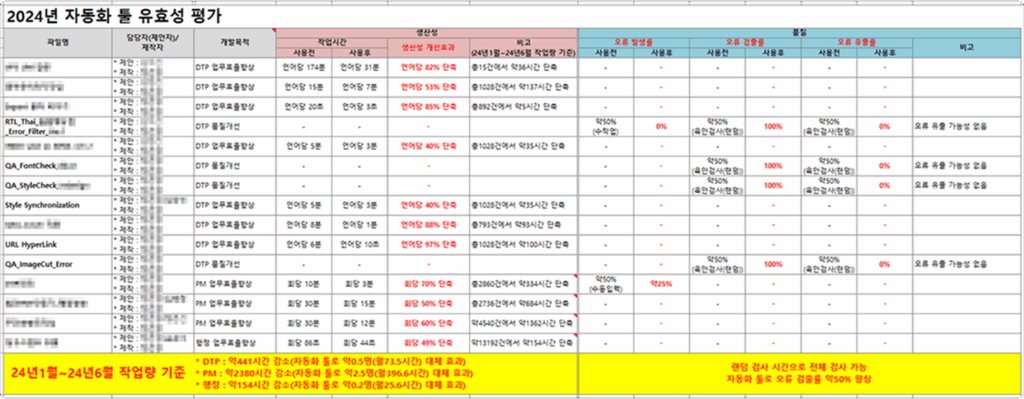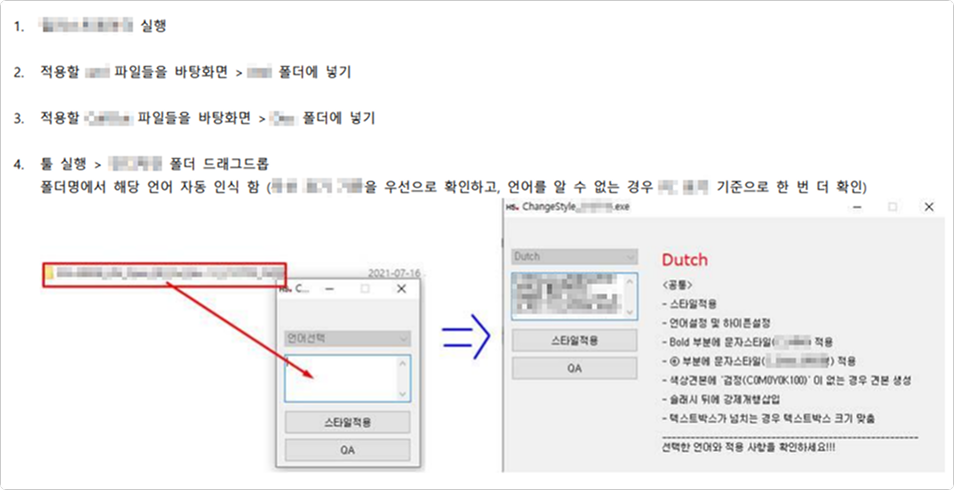When you launch a new product, your multilingual manuals need to ship on the same schedule as mass production and market release. At the same time, documentation accuracy cannot be compromised.
For many manufacturers, the typical response to this pressure is to add more people to the project. But as the number of target languages grows, this “more hands on deck” model quickly hits a limit. It becomes harder to keep quality consistent across languages and nearly impossible to scale without errors and delays.
At Hansem Global, we have treated this challenge as a process and automation problem, not just a staffing problem. Over the years we have developed and implemented a broad range of automation solutions designed specifically for multilingual manuals—so that our clients can achieve both quality and efficiency at scale.
Our multilingual manual localization team currently uses about 140 dedicated automation tools. Including various actions and GREP scripts, more than 200 automation components are now embedded in our production workflows. As a result, we maintain consistency across large programs and deliver high-volume multilingual content quickly without sacrificing quality.

Why automation is now essential for multilingual manuals
If your manuals need to be localized into 30, 40, or even 50+ languages, manual work alone cannot keep pace with production and launch timelines. Every small inefficiency or error multiplies across all languages and all document variants.
This is why automation is no longer optional. It is becoming core infrastructure for multilingual documentation:
- It removes repetitive tasks that add cost but no real value.
- It prevents recurring, pattern-based errors before they reach your customers.
- It allows experienced staff to spend their time on high-risk, high-judgment work.
Hansem Global’s automation program is built around these principles—and it is driven from the front line, not only from management or IT.
A team culture that pushes for efficiency
In our industry, long working hours alone are no longer a badge of honor. What really matters is how effectively a team can work within a given time frame and still hit quality and schedule targets.
That mindset is deeply rooted in Hansem Global’s localization development team. We do not consider it acceptable to repeat the same manual tasks simply because “that’s how it has always been done.” Instead, our teams constantly ask, “Is there a smarter way to do this?”
Around 95% of the automation tools currently in use at Hansem Global were initiated and designed by the practitioners themselves—not by customer requests or top-down directives. Because these tools are born from real project pain points, they do not sit on the shelf. They are actively used, reviewed, and refined in day-to-day production.

One common pain point in multilingual manuals is image handling. For every language and every document version, images often need to be classified, resized, and converted repeatedly.
To address this, we developed an “Automatic Image Classification and Conversion” tool. It automatically processes more than 100 types of image classification and resizing tasks across all languages.
This automation has two concrete benefits for our clients:
- It significantly reduces manual touches, which in turn minimizes the risk of human error.
- It shortens overall production time, especially for large language sets and frequent document updates.
Customers want solutions, not apologies
When an error does occur, a formal apology or a corrective action report is not enough. From a client’s perspective, what matters is whether the same type of issue will reappear in the next release.
In other words, they want a structural fix, not just a one-time explanation. Providing that structural fix is what strengthens trust and demonstrates real expertise.
Process-level automation is a powerful way to deliver that kind of improvement. Retraining or reminding staff may reduce errors temporarily, but the risk of recurrence remains. When we redesign the workflow and embed checks into automated tools, the error pattern itself is removed from the process.
For some languages, we encountered intermittent layout issues such as frame overflows and truncations. These problems are costly to detect late and easy to miss in manual checks.
To solve this, Hansem Global developed a “Frame Error Check” automation tool. Instead of waiting for final delivery checks, we apply this tool during the layout and editing stages. It scans the files, detects frame-related issues, and flags them for correction long before the final QA and delivery phase.

The outcome is simple but powerful: fewer last-minute fixes, less rework, and a significant reduction in repeated layout errors across languages. This kind of tool-driven improvement lifts both quality and schedule reliability.
Optimizing how you use your people
Multilingual manual programs are unpredictable. It is common to see several large projects arrive at the same time, or a single product family suddenly expand to dozens of languages. In scenarios where you might need to handle 50+ language versions at once, resource allocation becomes a serious challenge.
This is where automation becomes a key lever for workforce optimization. It allows you to scale output without endlessly scaling headcount.
In many of our projects, we work with large volumes of XML-based manuals. For each language, styles and various settings have to be applied consistently across many files.
Our “Style Application Automation” tool automatically converts multiple XML files and applies the correct language-specific styles and settings. It also produces a clear list of items that require human review, so that specialists can quickly confirm whether the output is acceptable.

This provides several advantages for our clients:
- Faster turnaround for large or urgent multilingual batches
- More consistent formatting and styling across languages
- Clear separation between what can be automated and what needs expert judgment
Automation is not a “one-click” solution
Despite these benefits, automation is not magic and it is not a full replacement for skilled people. Every automated process still requires confirmation and oversight:
- Are the tools working as expected for this particular project?
- Are there special cases that need to be handled differently?
- Do the results align with the client’s brand, regulatory, and usability requirements?
To answer these questions, we rely on experienced specialists who understand the entire documentation workflow and can evaluate potential risks. In our view, automation is a force multiplier for expert teams—it amplifies their impact instead of reducing their role.
By using automation to handle repetitive, rule-based steps, the same team can successfully manage more projects and more languages without compromising quality. For our clients, this translates into a more scalable, resilient documentation operation that does not require constant headcount expansion.
Conclusion: Automation as core infrastructure for multilingual manuals
In multilingual manual programs, automation has moved from “nice to have” to “essential infrastructure.”
It reduces repetitive work, keeps quality stable across languages, and improves overall efficiency—factors that are critical for manufacturers competing in global markets.
Hansem Global has built its automation approach on a deep understanding of multilingual manual production. We invest in improvement before our clients demand it, and we embed those improvements directly into the workflow through tools and automation. That is how we deliver consistent quality and reliable schedules across large, complex language portfolios.
Automation does more than lighten the workload. It strengthens organizational expertise and supports sustainable growth in global business.
If you are looking for a documentation partner who can help you achieve both quality and efficiency in your multilingual manuals—not just for the next launch, but as an ongoing capability—Hansem Global would be glad to support you. Our automation-driven approach is designed to make your global documentation operations faster, more reliable, and ready for future expansion.






